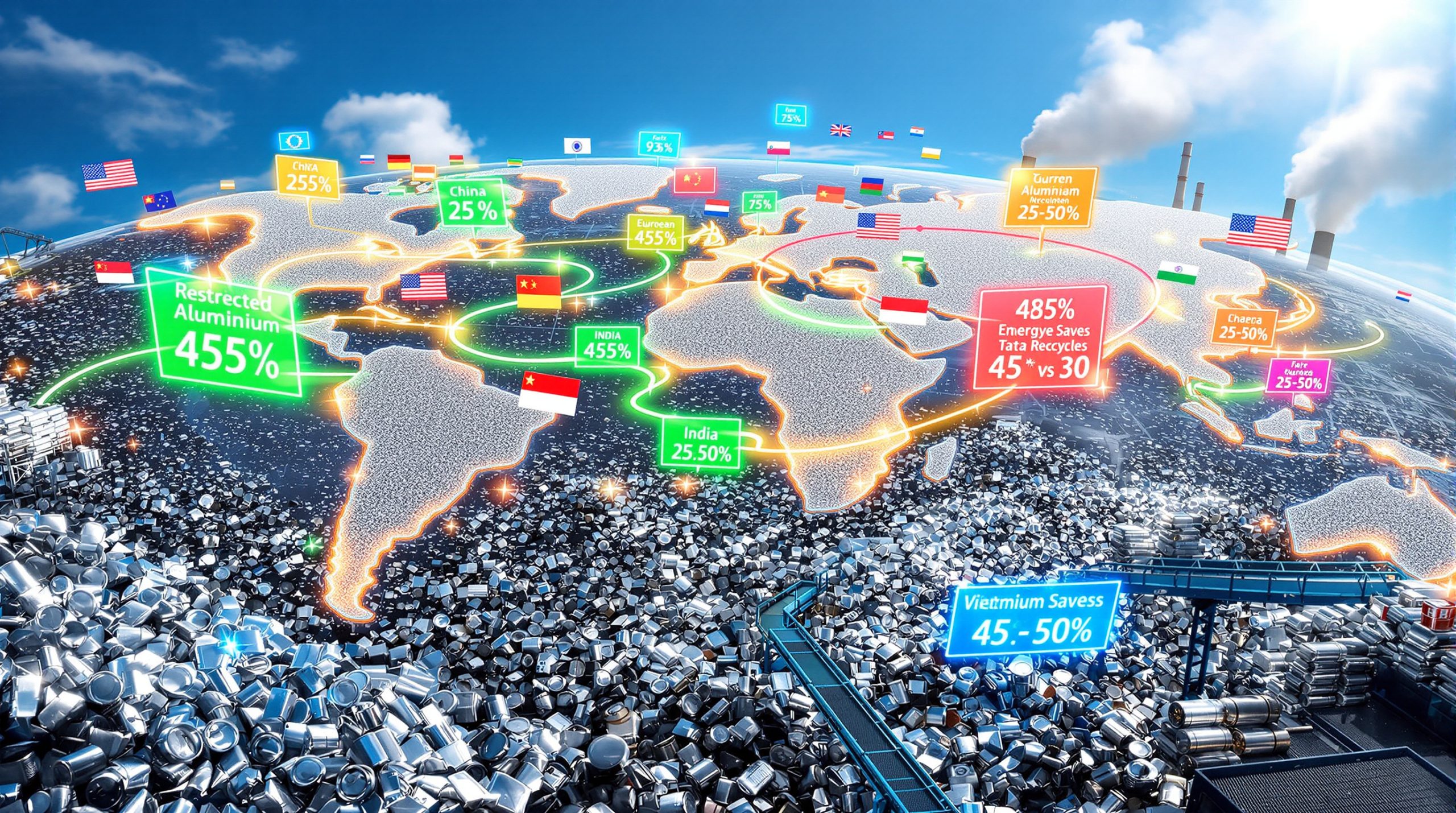How Are Rare Earth Magnet Users Responding to China's Export Controls?
The global rare earth magnet industry experienced a seismic shift in April 2025 when China implemented strict export controls on these critical components. This action has triggered a dramatic response from manufacturers worldwide who rely on these powerful magnets for everything from electric vehicles to wind turbines.
The Changing Landscape of Rare Earth Magnet Supply Chains
What Triggered the Shift in Rare Earth Magnet Markets?
The catalyst for the current market transformation came on April 4, 2025, when China announced comprehensive export controls impact on rare earth magnets. This move sent shockwaves through global supply chains, with immediate and severe consequences. Multiple automotive plants experienced production shutdowns within weeks as magnet stockpiles rapidly depleted.
"China's controls acted like a cattle prod into the whole industry," explains Grant Smith, Chairman of Less Common Metals, highlighting how the restrictions jolted manufacturers into action. The incident exposed the extreme vulnerability of global supply chains that had become overly dependent on a single source country.
The timing couldn't have been more critical, coming amid accelerating electric vehicle adoption worldwide and increasing deployment of wind energy systems—both technologies heavily reliant on rare earth magnets for their efficiency advantages.
Key Market Impacts of China's Export Controls
The market reaction has been swift and substantial. Neo Performance Materials CEO Rahim Suleman reports that "the phone is ringing off the hook" with customer inquiries seeking non-Chinese magnet sources. This surge in demand represents a fundamental shift in procurement priorities from pure cost-efficiency to supply security.
Perhaps most notably, companies are now demonstrating a genuine willingness to pay premium prices for rare earth magnets produced outside China—something that was almost unheard of before the export restrictions. This price tolerance signifies a recognition that supply chain resilience carries real economic value.
The export controls have also accelerated development timelines for alternative supply chains, with companies fast-tracking projects that might have otherwise proceeded at a more measured pace. Government initiatives in Europe, North America, and Asia have similarly gained momentum as rare earth magnets are increasingly recognized as strategically critical materials.
Premium Pricing for Non-Chinese Rare Earth Magnets
What Premium Are Customers Willing to Pay?
The market has established clear premium thresholds for non-Chinese rare earth magnets. According to industry leaders, customers are currently accepting a $10-30 per kilogram premium over Chinese magnet prices. For context, this represents an approximate 15-30% price increase for these essential components.
Magnet production facilities in Vietnam are commanding a 15-20% price premium over Chinese-made alternatives, according to sources at NovaTech, which is currently constructing a new facility there primarily to serve Samsung Electronics.
The premium extends to raw materials as well. Neodymium-praseodymium (NdPr) oxide—the critical rare earth compound used in magnet production—now sells for approximately $80 per kilogram from non-Chinese sources compared to the Chinese price of $62 per kilogram, representing a 29% premium.
Different industries demonstrate varying premium tolerances based on their competitive dynamics and the criticality of rare earth magnets to their products. Defense contractors, for example, show greater willingness to pay premiums compared to consumer electronics manufacturers operating on thinner margins.
Cost Impact Analysis for End Products
For electric vehicles, which typically contain 2-4 kilograms of rare earth magnets per vehicle, the additional cost translates to approximately $20-120 per vehicle when using premium-priced magnets from non-Chinese sources.
This cost impact creates particular challenges for automakers already engaged in fierce EV price competition while operating on compressed margins during the electrification transition. As one rare earth executive notes, however, manufacturers lose more "by having to close a plant for a month than paying a premium" for secure magnet supplies.
"The economic calculation isn't simply about component costs anymore. It's about operational resilience and the existential risk of production stoppages." — European auto industry analyst
For wind turbine manufacturers, the magnet premium represents a smaller percentage of total product cost but still impacts project economics. A typical 3MW wind turbine contains approximately 650kg of rare earth magnets, meaning premium pricing could add $6,500-19,500 per turbine.
The consumer electronics sector, with its razor-thin margins and intense price competition, faces the greatest challenge in absorbing these premiums, potentially leading to either price increases or accelerated development of alternative technologies.
The Global Race to Develop Alternative Supply Chains
Emerging Non-Chinese Magnet Production Facilities
A global race is underway to establish rare earth magnet production capacity outside China. Neo Performance Materials launched its new Estonia plant in May 2025, just one month after China's export restrictions, demonstrating the accelerated timelines now driving the industry. German auto supplier Schaeffler has already been confirmed as a customer for this facility.
NovaTech is investing 10 billion won ($7.39 million) to construct a Vietnam facility scheduled to open in early 2026. This plant will primarily serve Samsung Electronics' needs, highlighting how major technology companies are securing dedicated supply lines.
Less Common Metals has announced expansion of its operations into France, adding to growing European rare earth processing capabilities. These facilities represent just the vanguard of what industry experts expect to be a wave of new capacity development outside China.
Several Australian and American mining companies have accelerated rare earth mining projects, though the complex processing infrastructure needed to convert these materials into magnets remains a bottleneck in the supply chain.
Challenges in Building Alternative Supply Networks
Despite the flurry of development activity, the stark reality remains that China currently controls approximately 90% of global permanent magnet production. This dominance extends across the entire supply chain from mining through processing to finished magnets.
"It will take many years or even decades to develop significant ex-China capacity," cautions a mining industry analyst with expertise in rare earth supply chains. The challenge isn't simply one of mining capacity but of establishing the complete value chain from ore to finished magnet.
Higher labor costs outside China present a persistent challenge, as do the smaller economies of scale achievable in newly established facilities. These economic factors have historically deterred investment in non-Chinese production, and they haven't disappeared despite the increased willingness to pay premiums.
The complete rare earth magnet supply chain involves:
- Mining of rare earth ore
- Separation of individual rare earth elements
- Metal making
- Alloy production
- Magnet manufacturing
Each stage requires specialized expertise and significant capital investment, making rapid capacity expansion particularly challenging.
What Price Points Are Needed for Sustainable Supply?
Expert Price Projections for Rare Earth Materials
Industry analysts have established clear benchmarks for the pricing needed to support sustainable rare earth supply chains outside China. Project Blue estimates that NdPr oxide prices of $75-105 per kilogram are necessary to support adequate production levels and new project development.
More dramatically, investment bank Barrenjoey projects that prices of $120-180 per kilogram would be required to fund approximately 20 global mining projects currently in various planning stages—projects that would collectively provide significant supply diversification.
These projections stand in stark contrast to the current Chinese NdPr price of approximately $62 per kilogram, highlighting the substantial gap between current market conditions and sustainable economics for non-Chinese supply.
The challenge becomes particularly acute when considering that rare earth prices have historically been volatile, making investment decisions based on current premium pricing potentially risky if those premiums aren't sustained.
Industry Perspectives on Sustainable Pricing
Automakers have traditionally demonstrated comfort with 5-10% premiums for sustainably certified materials, according to a European automaker executive. However, this threshold falls well below the 20-30% premiums currently required for non-Chinese rare earth magnets.
"Companies selling globally face competitive disadvantages with high premiums," the executive notes, highlighting how regional differences in willingness to pay for supply security create market distortions.
Rare earth producers are advocating for higher sustainable premiums to fund new operations and reduce global dependency on Chinese supply. However, they also recognize the delicate balance required to avoid triggering widespread substitution efforts or demand destruction.
Industry leaders increasingly acknowledge the need for collaborative pricing approaches that fairly distribute costs throughout the supply chain while supporting necessary investments in capacity diversification.
| Price Level | Market Impact | Supply Chain Effect |
|---|---|---|
| $60-70/kg NdPr | Minimal price premium | Insufficient for new projects |
| $75-105/kg NdPr | Sustainable development | Enables select new capacity |
| $120-180/kg NdPr | Significant premium | Funds ~20 global mining projects |
| >$200/kg NdPr | Excessive premium | Risk of demand destruction |
How Are End Users Adapting Their Strategies?
Technological Adaptations to Rare Earth Dependency
Manufacturing companies are pursuing multiple technical approaches to reduce their vulnerability to rare earth supply disruptions. Some automakers, including BMW, have developed electric vehicles that function without rare earth magnets, instead using alternative motor designs that sacrifice some efficiency for supply security.
Other manufacturers are focusing on reducing rare earth content in their products rather than eliminating it entirely. This approach maintains most performance advantages while decreasing exposure to supply disruptions and price volatility.
"Despite these efforts, rare earth magnets remain medium-term necessary for most high-performance applications," notes an industry analyst. The superior power-to-weight ratio and efficiency of rare earth magnets make them difficult to replace entirely, particularly in weight-sensitive applications like electric vehicles.
Companies are increasingly adopting a dual-track approach: investing in alternative technologies for the long term while simultaneously securing diverse rare earth magnet supply in the near term.
New Supply Chain Security Approaches
Beyond technological adaptation, companies are implementing multiple supply chain security strategies:
-
Direct investment: Several large manufacturers have taken equity positions in upstream rare earth production companies to secure preferential access to materials.
-
Long-term contracts: Buyers are increasingly willing to commit to multi-year purchase agreements at fixed or formula-based prices to give suppliers the confidence to invest in new capacity.
-
Geographic diversification: Procurement departments now explicitly value supplier diversity by geography, even when it comes with cost implications.
-
Strategic stockpiling: Companies have increased their inventory levels of critical materials, accepting the carrying costs as insurance against disruptions.
These approaches represent a fundamental shift in purchasing philosophy from just-in-time efficiency to resilience-focused procurement. As one procurement director noted, "We've moved from treating rare earth magnets as commodities to treating them as strategic minerals reserve."
The Economic Balancing Act
Finding the Optimal Price Point
The rare earth magnet market faces a delicate balancing act in establishing sustainable pricing. Prices that are too high risk accelerating substitution efforts and destroying demand, potentially leading to boom-bust cycles that benefit nobody in the long term.
Conversely, prices that are too low provide insufficient incentive for developing new production capacity outside China, perpetuating the supply vulnerability that created the current crisis.
Neo Performance Materials CEO Rahim Suleman emphasizes the need for industry-wide collaboration on sustainable pricing: "We need to be responsible about where we price things. If we price things too high, we'll destroy demand."
This cooperative approach represents a significant departure from traditional commodity market dynamics where prices are determined purely by short-term supply and demand. Instead, the industry is moving toward a model that considers long-term supply security as a value component.
Global Competition Considerations
The willingness to pay premiums for supply security varies significantly by region and market segment, creating competitive challenges. Companies selling primarily to security-conscious markets like defense or critical infrastructure can more easily absorb premium costs than those competing in price-sensitive consumer markets.
Government subsidies and incentives are increasingly influencing the competitive landscape, with programs like the U.S. Inflation Reduction Act providing financial support for domestic rare earth supply chains. These initiatives help bridge the economic gap between Chinese and non-Chinese supply, but create regional disparities in manufacturer economics.
Strategic national interests in securing critical minerals strategy have elevated rare earth magnets from a purely commercial concern to a geopolitical issue. This transformation brings both opportunities and risks for manufacturers, as government priorities may not always align with commercial interests.
The emerging reality is a two-tier market where some applications justify premium pricing for supply security while others remain extremely cost-sensitive. This bifurcation will likely drive increasing specialization among both suppliers and end-users.
FAQ: Rare Earth Magnets and Supply Chain Security
What are rare earth magnets and why are they important?
Rare earth magnets are super-strong permanent magnets containing elements like neodymium and praseodymium. They're critical components in electric vehicles, wind turbines, electronics, and defense applications due to their exceptional magnetic properties that enable smaller, lighter, and more efficient devices.
A typical neodymium magnet can generate a magnetic field approximately 1.4 Tesla in strength—about 10 times stronger than traditional ferrite magnets. This extraordinary strength-to-weight ratio makes them indispensable for applications where size and efficiency are critical.
Why did China restrict rare earth magnet exports?
China implemented export controls amid escalating trade tensions with the United States. As the dominant global producer controlling approximately 90% of the market, these restrictions serve as both an economic and strategic leverage tool in international relations.
China's rare earth industry developed over decades with significant government support and less stringent environmental regulations than those found in Western countries. This historical advantage, combined with technical expertise developed over time, created China's current market dominance.
How long will it take to develop significant non-Chinese supply?
Industry experts suggest it will take many years or even decades to develop substantial rare earth magnet production capacity outside China. The complex supply chain involves mining, separation, metal making, alloy production, and magnet manufacturing—each requiring specialized expertise and significant investment.
While several mining projects outside China could begin production within 3-5 years, the downstream processing capacity development timeline is longer. Full supply chain maturity, including specialized magnet manufacturing for specific applications, could require 7-10 years of concerted investment.
Are there alternatives to rare earth magnets?
Some manufacturers are developing technologies that reduce or eliminate rare earth content. BMW has developed EVs without rare earth magnets, but industry analysts indicate that complete substitution is not feasible in the medium term for most applications due to performance advantages of rare earth magnets.
Alternative technologies include:
- Ferrite magnets (lower strength but abundant materials)
- Samarium-cobalt magnets (strong but expensive)
- Electromagnetic systems (require constant power input)
- Reluctance motors (lower power density but no rare earths)
Each alternative involves performance trade-offs that limit their applicability, particularly in weight-sensitive or high-efficiency applications.
Market Data: Rare Earth Magnet Supply Chain
| Supply Chain Segment | China Market Share | Key Non-Chinese Players |
|---|---|---|
| Rare Earth Mining | ~60% | MP Materials (USA), Lynas (Australia) |
| Rare Earth Processing | ~85% | Lynas (Malaysia), MP Materials (USA) |
| Magnet Production | ~90% | Neo Performance (Estonia), Hitachi (Japan) |
Premium Pricing Comparison for Rare Earth Materials
| Material | Chinese Price | Non-Chinese Premium | Percentage Increase |
|---|---|---|---|
| NdPr Oxide | $62/kg | $75-105/kg | 21-69% |
| Finished Magnets | Base price | $10-30/kg additional | 15-30% |
| Vietnam-made Magnets | Base price | 15-20% premium | 15-20% |
Future Outlook for Rare Earth Supply Chains
Short-Term Market Projections (1-2 Years)
The next 12-24 months will likely see continued premium pricing for non-Chinese rare earth magnets as new supply capacity gradually comes online. Industry analysts expect the premium gap to remain in the 15-30% range during this period, with occasional price spikes during supply disruptions.
We can anticipate gradual increases in ex-China production capacity, particularly from existing facilities that are expanding operations. Neo Performance Materials' Estonia plant and Lynas Rare Earths' Malaysian processing facility will be critical contributors to this near-term capacity growth.
The geopolitical environment suggests potential for additional export restrictions or policy changes as nations increasingly view rare earth elements as strategic resources. Companies should prepare contingency plans for further supply chain disruptions.
Government support for domestic rare earth industries will continue to accelerate, with programs like the U.S. Defense Production Act and the EU Critical Raw Materials Act providing financial and regulatory backing for new projects.
Long-Term Industry Transformation (5-10 Years)
Over the longer term, we can expect significant expansion of rare earth mining outside China, with Australia, the United States, and Canada emerging as key production centers. Projects currently in exploration or permitting phases will begin contributing meaningful supply within this timeframe.
The development of regional processing and magnet manufacturing hubs will create more balanced global supply chains. North American and European manufacturing capacity will reduce Chinese market dominance, though China will remain the largest single producer.
Technological innovations will gradually reduce rare earth dependency in some applications, particularly where the performance trade-offs are acceptable. However, the superior properties of rare earth magnets ensure their continued necessity in high-performance applications.
Recycling will become an increasingly important source of rare earth materials, with several commercial-scale recycling operations expected to be operational by 2030. This circular economy approach will provide a secondary supply source independent of mining.
Strategic Considerations for Manufacturers
Companies reliant on rare earth magnets must carefully balance cost premiums against supply security, developing tiered strategies based on application criticality. For mission-critical components, supply security will justify premium pricing, while cost-sensitive applications may require redesign.
Hybrid supply strategies
Looking to Invest in the Next Major Mineral Discovery?
Don't miss out on significant ASX mineral discoveries that could generate substantial returns for your portfolio. Visit Discovery Alert's dedicated discoveries page to explore historic examples of exceptional outcomes, powered by the proprietary Discovery IQ model that turns complex mineral data into actionable insights.




